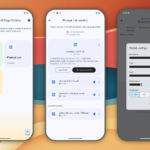
There’s no question that the Internet has changed our lives for the better. In fact, most of us probably use the Internet for almost everything – buy food, communicate with friends and family, learn new skills, do business, etc. You can even use it to escape reality from time to time.
In this day and age, one would think that everyone is able to access the information that’s just right at our fingertips. Unfortunately, that thought would be entirely incorrect. Not all websites are accessible to all. People with disabilities are not always able to navigate and interact with a website.
Businesses and organizations have a responsibility of ensuring that no one feels excluded. In this article, we’ll be discussing how to make websites more accessible and inclusive.
Accessibility in 2021: What is it like?
As the pandemic continues, various businesses, schools, and other types of public accommodation have closed their doors indefinitely. Because of this as well as a fear of getting the coronavirus, most people have resorted to conducting most, if not all, of their activities online. In fact, in the US alone, there was a 20% increase in internet traffic after the pandemic was declared a national emergency. In certain cities, internet usage jumped by 40%. The shift to doing things online may not have been easy for many of us. But for people with disabilities, it might as well have been impossible. eCommerce platforms are not always compatible with screen readers, for example. Websites that have a cluttered layout and/or small buttons can make it difficult for people with motor impairments to navigate them and interact with the content. A lack of captions of video content can make it difficult for people with hearing impairments to access certain information. The list goes on.
According to the World Health Organization (WHO), there are over 1 billion people living with a disability. 20% of them experience great functional difficulties in their everyday lives. Just imagine that many people are unable to get critical information that could save their lives. That same number of people are also unable to perform certain tasks online that most of us take for granted simply because the website or app has accessibility issues. For companies, that’s a lot of business lost. For schools, that’s a lot of students who are unable to get quality education. And for the disabled, that’s a lot of information, products, and services that they are unable to avail.
Obviously, with much of our lives on hold and online because of the pandemic, businesses and organizations need to make sure that their websites and apps can be accessed by anyone, whether or not they have a disability.
4 elements to focus on for more accessible websites
There are different ways to address the access barriers that are preventing persons with disabilities from using the internet to meet their various needs. We’ll focus on the four most common types of accessibility errors for now.
Have proper alt text for images
Providing alternative text for all images on your website will allow people with visual impairments to understand what is being depicted on their screens. Make sure the description is short and simple.
Organize the structure of content
The structure and organization of your content can significantly affect your website’s accessibility. Breaking down information into blocks of text can make it easier for people to navigate your content as well as understand it. Using headings can help users in comprehending how the content is organized and give them a quick outline of what information is available on the page. It will also enable people using assistive technologies to easily jump to the specific sections of the content that they are interested in. In addition, tables can help display data in a meaningful and accessible way.
Remediate your PDFs & documents
All documents available online must be accessible. There are a variety of steps you need to take to create accessible PDFs. Some of these include adding a table of contents, using headings, creating alternative text for images, and adding tags.
Focus on colour contrast
There should be enough colour contrast that will enable people with visual impairment to distinguish the text from the background. Too little contrast can make it difficult for them to perceive content and interact with the elements within the website. Generally, the contrast ratio should be at least 7:1, except for large scale text and its images which should have a contrast ratio of at least 4.5:1.
The Future Looks More Accessible
There’s no question that web accessibility is the most important factor to consider when dealing with customers. Thus, businesses need to ensure it in order to serve a larger number of customers and create a better journey for them.
Author Bio
David Gevorkian started Be Accessible because of his passion for website accessibility and ADA compliance. He spent much of his career working for financial institutions creating websites and mobile applications. He earned his Master’s in Business Administration from Salve Regina University in Rhode Island. David is an advocate for creating web interfaces usable by all people. He enjoys recording music and playing soccer with friends.
Discover more from TechBooky
Subscribe to get the latest posts sent to your email.







